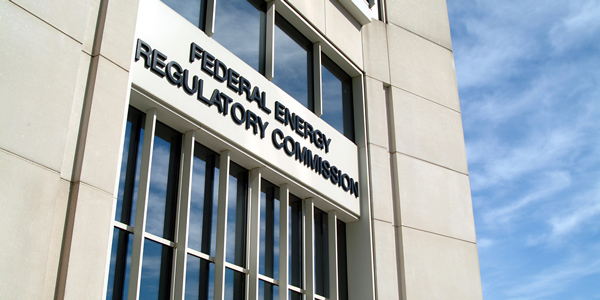Advanced meters have reached a 43% penetration rate but demand resources’ contribution to meeting RTO/ISO peak demand has decreased, FERC reported in its 12th annual report on demand response and advanced metering.
DR in the organized wholesale markets dropped to 5.7% in 2016 from 6.6% in 2015 according to RTO/ISO reports, as demand resource participation fell 10% while peak demand grew by 3%.
The decreased participation was largely because of a 24% (3,030 MW) drop in DR enrollment in PJM, which lost 2,900 MW in its reliability program (limited, extended summer and annual DR) and 900 MW in its economic program. The drops were partially offset by 600 MW of DR entering the market as Capacity Performance resources.
CAISO saw DR participation fall by 8% because of decreased enrollment in price-responsive demand programs administered by California’s three investor-owned utilities. ISO-NE and NYISO saw 4% drops while MISO saw a 1% increase.
Retail DR, by contrast, showed growth. Potential peak demand savings from retail DR programs nationwide increased by 5.4% between 2014 and 2015, according to the Energy Information Administration. Industrial customers were responsible for 52% of potential savings, while residential customers contributed 26% and commercial customers 21%, a breakdown that FERC said has “remained fairly stable over time.”
FERC also cited EIA data showing that 64.7 million advanced meters were deployed nationwide in 2015 out of a total of 150.8 million meters.
The report also took note of states’ grid modernization efforts, including deployment of time-of-use rates. The annual report, released Dec. 28, was mandated by Congress in the Energy Policy Act of 2005.
Con Ed ‘Value Stack’ Approved
Consolidated Edison last week won FERC approval to recover its payments to distributed energy resources customers under the New York Public Service Commission’s Reforming the Energy Vision initiative (ER18-214).
The PSC created a “value stack” describing the services provided by DERs: capacity; environmental value; demand reduction value; and locational system relief. (See NYPSC Limits ESCO Service, Sets New DER Compensation.) Con Ed agreed to New York City’s request that its annual accounting to FERC include an itemization of the four DER cost components.
Other Rulings
In other rulings last week, the commission:
-
-
- Ordered a Section 206 proceeding to determine reactive service rates for Allegheny Energy Supply’s 80-MW coal bed methane-fueled facility located in Buchanan, Va. (ER17-2575, EL18-46).
- Approved transmission rate incentives for Dairyland Power Cooperative’s share of the Cardinal-Hickory Creek 345-kV transmission project (ER18-193). The commission approved a hypothetical capital structure of 45% equity/55% debt and recovery of 100% of prudently incurred costs if the project is canceled for reasons beyond Dairyland’s control. The 125-mile project will run from the Cardinal substation in Middleton, Wis., to the Hickory Creek substation in Dubuque County, Iowa. Dairyland will own 9% of the project with American Transmission Co. and ITC Midwest each owning 45.5%. Pending regulatory approval, the companies expect to begin construction in January 2022 with an in-service date of June 2023.
- Ordered hearing and settlement procedures on proposed revisions to the transmission formula rate templates of Public Service Company of Oklahoma, Southwestern Electric Power Co., AEP Oklahoma Transmission and AEP Southwestern Transmission (ER18-194, ER18-195). Oklahoma Municipal Power Authority, East Texas Electric Cooperative and Northeast Texas Electric Cooperative protested that the AEP filings failed to justify the proposed changes, which AEP said were needed to transition from a historic basis to a forward-looking accounting method. The commission said the resolution of the dockets is subject to the outcome of East Texas’ complaint over the AEP companies’ 10.7% base return on equity (EL17-76).
- Set hearing and settlement proceedings on Southwestern Public Service’s proposed revisions to the formula rate implementation protocols in its power supply agreements with Central Valley Electric Cooperative, Lea County Electric Cooperative, Farmers Electric Cooperative of New Mexico, Roosevelt County Electric Cooperative, Tri-County Electric Cooperative and West Texas Municipal Power Agency (ER18-228). The revisions update the depreciation rates for the two units at SPS’ Tolk generating station based on a 2032 retirement date and the retirement of its Carlsbad generator at the end of 2017. The commission cited protests by several co-ops that SPS had not presented proof it had made a legally binding decision to retire Tolk or Carlsbad earlier than previously indicated. They said that could allow SPS to change its decision after having benefited from recovering accelerated depreciation. Chairman Kevin McIntyre did not participate in the ruling.
- Approved an uncontested settlement on Alliant Energy’s revenue requirement for providing reactive supply and voltage control at its Interstate Power and Light and Wisconsin Power and Light generating facilities (EL17-60, ER17-980-001). The settlement will pay IPL $3.58 million and WPL $3.77 million. Alliant had requested an annual revenue requirement of $4.23 million for IPL, a decrease from the $4.89 million it received in 2015, and $4.45 million for WPL, an increase from $2.41 million in 2015.
-
— Rich Heidorn Jr.




